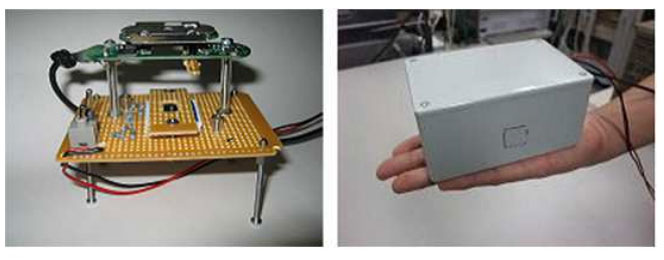A Holographic Microscope for Just $250
Traditional microscopy is a powerful tool for imaging small objects, such as cells. However, anybody who has used one will know its limitations: a tiny field of view and a shallow depth of field. That makes it hard to get a sense of the three dimensional shape of objects like cells.

One clever way round this is to make a hologram of the sample. The idea here is to split a laser beam in two, use one as a reference beam and bounce the other off the sample to record the pattern of phase shifts that this produces using a digital camera.
Recombining the beams produces an interference pattern that can be analysed to retrieve three-dimensional information about the sample in high resolution.
This method is clearly powerful. A traditional microscope records only variations in the intensity of light bouncing off a sample. The holographic technique records this and phase information and so obviously stores more information about the subject. With the appropriate image-processing software. it’s possible to change the depth of focus, correct optical aberrations and reconstruct the 3D shape of the sample.
There’s another advantage too. Digital holographic microscopy has the potential to be incredibly cheap. Various research groups have created devices for as little as $1000 or so.
Today, Atsushi Shiraki at the Kisarazu National College of Technology in Japan, and a few pals, show how to cut the cost even further. These guys have built a digital holographic microscope using a web camera, a small solid state laser, an optical pinhole and free open source software.
The total cost: just $250 (with the optical pinhole accounting for about half of this!). The entire machine is light and portable, fitting in the palm of the hand (details in the paper below).
That’s a handy machine that could play a useful role both in field studies for professional researchers and in schools where value for money is a key factor in equipment purchases. It might also be a fun to put together at home.
Ref: arxiv.org/abs/1211.0336: Handheld and Low-Cost Digital Holographic Microscopy
Keep Reading
Most Popular
Large language models can do jaw-dropping things. But nobody knows exactly why.
And that's a problem. Figuring it out is one of the biggest scientific puzzles of our time and a crucial step towards controlling more powerful future models.
The problem with plug-in hybrids? Their drivers.
Plug-in hybrids are often sold as a transition to EVs, but new data from Europe shows we’re still underestimating the emissions they produce.
Google DeepMind’s new generative model makes Super Mario–like games from scratch
Genie learns how to control games by watching hours and hours of video. It could help train next-gen robots too.
How scientists traced a mysterious covid case back to six toilets
When wastewater surveillance turns into a hunt for a single infected individual, the ethics get tricky.
Stay connected
Get the latest updates from
MIT Technology Review
Discover special offers, top stories, upcoming events, and more.